On Orthogonal Double Covers and Decompositions of Complete Bipartite Graphs by Caterpillar Graphs
Abstract
1. Introduction
- ϕ: defined by , where is a collection of graphs; each one is isomorphic to the graph .
- defined by , where is a class of disjoint sets of vertices.
2. Symmetric Starters
- If is a half starter, then the union of all translates of forms an edge decomposition of ; that is, . Hereafter, a half-starter can be represented by the vector Two half-starter vectors and are said to be orthogonal if .
- If two half-starter vectors and are orthogonal, then with is an of . The subgraph of with is called the symmetric graph of If is a half starter, then is also a half starter. A half starter is called a symmetric starter with respect to if the following vectors and are orthogonal.
- Let be a positive integer and a half starter represented by the vector . Then, is the symmetric starter if .
3. Main Results
4. Use Case
4.1. Local-to-Global Governments Public Elections
4.2. On-Chip Communication Networks
5. Conclusions
Author Contributions
Funding
Data Availability Statement
Acknowledgments
Conflicts of Interest
References
- Nawaz, H.; Ali, H.M.; Laghari, A.A. UAV Communication Networks Issues: A Review. Arch. Comput. Methods Eng. 2022, 28, 1349–1369. [Google Scholar] [CrossRef]
- Collantoni, E.; Alberti, F.; Meregalli, V.; Meneguzzo, P.; Tenconi, E.; Favaro, A. Brain networks in eating disorders: A systematic review of graph theory studies. Eat. Weight Disord. 2022, 27, 69–83. [Google Scholar] [CrossRef] [PubMed]
- Block, P.; Hoffman, M.; Raabe, I.J.; Dowd, J.B.; Rahal, C.; Kashyap, R.; Mills, M.C. Social network-based distancing strategies to flatten the COVID-19 curve in a post-lockdown world. Nat. Hum. Behav. 2020, 4, 588–596. [Google Scholar] [CrossRef]
- Merrifield, R.E.; Simmons, H.E. Topological Methods in Chemistry; Wiley-Interscience: Hoboken, NJ, USA, 1989. [Google Scholar]
- Harary, F.; Schwenk, A.J. The number of caterpillars. Discret. Math. 1973, 6, 359–365. [Google Scholar] [CrossRef]
- Ortiz, C.; Villanueva, M. Maximal independent sets in caterpillar graphs. Discret. Appl. Math. 2012, 160, 259–266. [Google Scholar] [CrossRef]
- Boesch, F.T.; Chen, S.; McHugh, J.A.M. On covering the points of a graph with point disjoint paths. In Graphs and Combinatorics. Lecture Notes in Mathematics; Springer: Berlin/Heidelberg, Germany, 1974; pp. 201–212. [Google Scholar] [CrossRef]
- Ibrahim, M.; Majeed, S.; Siddiqui, M.K. Edge irregular reflexive labeling for star, double star and caterpillar graphs. TWMS J. App. Eng. Math. 2020, 10, 718–726. [Google Scholar]
- Azhar, K.; Zafar, S.; Kashif, A. On Fault-Tolerant Partition Dimension of Homogeneous Caterpillar Graphs. Math. Probl. Eng. 2021, 2021, 7282245. [Google Scholar] [CrossRef]
- El-Basil, S. Applications of caterpillar trees in chemistry and physics. J. Math. Chem. 1987, 1, 153–174. [Google Scholar] [CrossRef]
- Gutman, I. Topological properties of benzenoid systems—An identity for the sextet polynomial. Theor. Chim. Acta 1977, 45, 309–315. [Google Scholar] [CrossRef]
- Andrade, E.; Gomes, H.; Robbiano, M. Spectra and Randic Spectra of Caterpillar Graphs and Applications to the Energy. MATCH Commun. Math. Comput. Chem. 2017, 77, 61–75. [Google Scholar]
- El-Basil, S. Caterpillar (Gutman) trees in chemical graph theory. In Advances in the Theory of Benzenoid Hydrocarbons; Springer: Berlin/Heidelberg, Germany, 2005; pp. 273–289. [Google Scholar] [CrossRef]
- Yimer, T.E.; Baskar Babujee, J. Perfect Domination Polynomial of Homogeneous Caterpillar Graphs and of Full Binary Trees. Math. Notes 2022, 111, 297–304. [Google Scholar] [CrossRef]
- Blondin Massé, A.; de Carufel, J.; Goupil, A.; Lapointe, M.; Nadeau, É.; Vandomme, É. Leaf realization problem, caterpillar graphs and prefix normal words. Theor. Comput. Sci. 2018, 732, 1–13. [Google Scholar] [CrossRef]
- Dinneen, M.J.; Khosravani, M. A linear time algorithm for the minimum spanning caterpillar problem for bounded treewidth graphs. In Structural Information and Communication Complexity. SIROCCO 2010. Lecture Notes in Computer Science; Springer: Berlin/Heidelberg, Germany, 2010; pp. 237–246. [Google Scholar] [CrossRef]
- Saraswathi, M.; Meera, K.N. Radio Mean Labeled Graphs to Generate Keys in Cryptography. In Proceedings of the 2021 2nd International Conference on Communication, Computing and Industry 4.0 (C2I4), Bangalore, India, 16–17 December 2021; pp. 1–3. [Google Scholar] [CrossRef]
- Schneider, K.; Bhagyanath, A.; Roob, J. Code generation criteria for buffered exposed datapath architectures from dataflow graphs. In Proceedings of the 23rd ACM SIGPLAN/SIGBED International Conference on Languages, Compilers, and Tools for Embedded Systems, San Diego, CA, USA, 14 June 2022; ACM: New York, NY, USA, 2022; pp. 133–145. [Google Scholar] [CrossRef]
- Jegan, R.; Vijayakumar, P.; Thirusangu, K. A Coding Algorithm using Super-edge Magic Total Labeling of Extended Duplicate Graphs. In Proceedings of the 2022 Second International Conference on Computer Science, Engineering and Applications (ICCSEA), Gunupur, India, 8 September 2022; pp. 1–6. [Google Scholar]
- Liu, J.-B.; Aslam, M.K.; Javaid, M.; Raheem, A. Computing Edge-Weight Bounds of Antimagic Labeling on a Class of Trees. IEEE Access 2019, 7, 93375–93386. [Google Scholar] [CrossRef]
- Yao, B.; Wang, H.; Su, J.; Zhang, W. Graph-Based Lattices Cryptosystem As New Technique of Post-Quantum Cryptography. In Proceedings of the 2021 IEEE 5th Advanced Information Technology, Electronic and Automation Control Conference (IAEAC), Chongqing, China, 12–14 March 2021; pp. 1319–1324. [Google Scholar] [CrossRef]
- El-Shanawany, R.; Gronau, H.-D.O.F.; Grüttmüller, M. Orthogonal Double Covers of Kn,n by Small Graphs. Discret. Appl. Math. 2004, 138, 47–63. [Google Scholar] [CrossRef]
- El-Mesady, A.; Romanov, A.Y.; Amerikanov, A.A.; Ivannikov, A.D. On Bipartite Circulant Graph Decompositions Based on Cartesian and Tensor Products with Novel Topologies and Deadlock-Free Routing. Algorithms 2023, 16, 10. [Google Scholar] [CrossRef]
- Heinrich, K. Graph decompositions and designs. In The CRC Handbook of Combinatorial Designs; Colbourn, C.J., Dinitz, J.H., Ii, L.C., Jajcay, R., Magliveras, S.S., Eds.; CRC Press: Boca Raton, FL, USA, 1996. [Google Scholar]
- Rosa, A. On Cyclic Decompositions of the Complete Graph into (4m + 2)—Gons. Mat. Fyzikálny Časopis 1966, 16, 349–352. [Google Scholar]
- Dukes, P.J.; Colbourn, C.J.; Syrotiuk, V.R. Directed complete bipartite graph decompositions: Indirect constructions. Discrete Math. 2008, 308, 367–374. [Google Scholar] [CrossRef]
- Hartmann, S.; Schumacher, U. Orthogonal double covers of general graphs. Discret. Appl. Math. 2004, 138, 107–116. [Google Scholar] [CrossRef]
- Higazy, M. A Study on the Orthogonal Double Covers of the Complete Bipartite Graphs. Master’s Thesis, Menoufia University, Al Minufiyah, Egypt, 2006. [Google Scholar]
- Higazy, M. A Study of the Suborthogonal Double Covers of Complete Bipartite Graphs. Ph.D. Thesis, Menoufia University, Al Minufiyah, Egypt, 2009. [Google Scholar]
- Demetrovics, J.; Katona, G.O.H. External combinatorial problems in relational database. In Fundamentals of Combinatorics of Computation Theory; Springer: Berlin/Heidelberg, Germany, 1981; pp. 110–119. [Google Scholar] [CrossRef]
- Gabis, A.B.; Koudil, M. NoC routing protocols—Objective-based classification. J. Syst. Archit. 2016, 66–67, 14–32. [Google Scholar] [CrossRef]
- Romanov, A.; Myachin, N.; Sukhov, A. Fault-Tolerant Routing in Networks-on-Chip Using Self-Organizing Routing Algorithms. In Proceedings of the IECON 2021—47th Annual Conference of the IEEE Industrial Electronics Society, Toronto, ON, Canada, 13–16 October 2021; pp. 1–6. [Google Scholar] [CrossRef]
- Gronau, H.-D.O.F.; Hartman, S.; Grüttmüller, M.; Leck, U.; Leck, V. On orthogonal double covers of graphs. Des. Codes Cryptogr. 2002, 27, 49–91. [Google Scholar] [CrossRef]
- El-Shanawany, R.; Shabana, H.; El-Mesady, A. On Orthogonal Double Covers of Graphs by Graph-Path and Graph-Cycle; LAP Lambert Academic Publishing: Saarbrücken, Germany, 2014; ISBN 3659646814. [Google Scholar]
- El-Shanawany, R.; El-Mesady, A. On the one edge algorithm for the orthogonal double covers. Prikl. Diskretn. Mat. 2019, 45, 78–84. [Google Scholar] [CrossRef]
- El-Shanawany, R.A.; Higazy, M.; Scapellato, R. A note on orthogonal double covers of complete bipartite graphs by a special class of six caterpillars. AKCE J. Graphs Comb. 2010, 7, 1–4. [Google Scholar]
- Higazy, M.; El-Mesady, A.; Mohamed, M.S. On Graph-Orthogonal Arrays by Mutually Orthogonal Graph Squares. Symmetry 2020, 12, 1895. [Google Scholar] [CrossRef]
- El-Mesady, A.; Hamed, Y.S.; Abualnaja, K.M.; El-Mesady, A.; Hamed, Y.S.; Abualnaja, K.M. A Novel Application on Mutually Orthogonal Graph Squares and Graph-Orthogonal Arrays. AIMS Math. 2022, 7, 7349–7373. [Google Scholar] [CrossRef]
- Akavia, A.; LaVigne, R.; Moran, T. Topology-hiding computation on all graphs. In Proceedings of the Advances in Cryptology–CRYPTO 2017–37th Annual International Cryptology Conference, Santa Barbara, CA, USA, 20–24 August 2017; pp. 447–467. [Google Scholar]
- Kilicman, A.; Abdulkalek, K. Topological spaces associated with simple graphs. J. Math. Anal. 2018, 9, 44–52. [Google Scholar]
- Kozae, A.M.; El Atik, A.A.; Elrokh, A.; Atef, M. New types of graphs induced by topological spaces. J. Intell. Fuzzy Syst. 2019, 36, 5125–5134. [Google Scholar] [CrossRef]
- El-Mesady, A.; Bazighifan, O. Construction of Mutually Orthogonal Graph Squares Using Novel Product Techniques. J. Math. 2022, 9722983. [Google Scholar] [CrossRef]
- Mahapatra, T.; Ghorai, G.; Pal, M. Competition Graphs under Interval-Valued m-Polar Fuzzy Environment and Its Application. Comput. Appl. Math. 2022, 41, 285. [Google Scholar] [CrossRef]
- Pramanik, T.; Muhiuddin, G.; Alanazi, A.M.; Pal, M. An Extension of Fuzzy Competition Graph and Its Uses in Manufacturing Industries. Mathematics 2020, 8, 1008. [Google Scholar] [CrossRef]
- Rashmanlou, H.; Borzooei, R.A. Product Vague Graphs and Its Applications. J. Intell. Fuzzy Syst. 2016, 30, 371–382. [Google Scholar] [CrossRef]
- Laforest, C.; Liestman, A.L.; Shermer, T.C.; Sotteau, D. Edge-disjoint spanners of complete bipartite graphs. Discret. Math. 2001, 234, 65–76. [Google Scholar] [CrossRef]
- Chemodanov, D.; Esposito, F.; Sukhov, A.; Calyam, P.; Trinh, H.; Oraibi, Z. AGRA: AI-augmented geographic routing approach for IoT-based incident-supporting applications. Future Gener. Comput. Syst. 2019, 92, 1051–1065. [Google Scholar] [CrossRef]
- Comellas, F.; Mitjana, M.; Peters, J. Broadcasting in small-world communication networks. Sirocco 2002, 85, 73–85. [Google Scholar]
- Li, W.; Zhang, Y.; Qiao, M.; Chang, L.; Qin, L.; Lin, X. Scaling distance labeling on small-world networks. In Proceedings of the ACM SIGMOD International Conference on Management of Data, Seattle, WA, USA, 18–23 June 2002; ACM: New York, NY, USA, 2002; pp. 1060–1077. [Google Scholar] [CrossRef]
- Carloni, L.P.; Pande, P.; Xie, Y. Networks-on-chip in emerging interconnect paradigms: Advantages and challenges. In Proceedings of the 2009 3rd ACM/IEEE International Symposium on Networks-on-Chip, La Jolla, CA, USA, 10–13 May 2009; pp. 93–102. [Google Scholar] [CrossRef]
- Richardson, T.D.; Nicopoulos, C.; Park, D.; Narayanan, V.; Xie, Y.; Das, C.; Degalahal, V. A hybrid SoC interconnect with dynamic TDMA-based transaction-less buses and on-chip networks. In Proceedings of the 19th International Conference on VLSI Design Held Jointly with 5th International Conference on Embedded Systems Design (VLSID’06), Hyderabad, India, 3–7 January 2006; pp. 657–664. [Google Scholar] [CrossRef]
- Batra, N.; Singh, B. Evolution of Efficient On-Chip Interconnect Architecture for SOC: A Review. In Proceedings of the 2022 IEEE Global Conference on Computing, Power and Communication Technologies (GlobConPT), New Delhi, India, 23–25 September 2022; pp. 1–6. [Google Scholar] [CrossRef]
- Conti, M. Simulation Environment for Mixed AHB-NoC Architectures. In Applications in Electronics Pervading Industry, Environment and Society. ApplePies 2021. Lecture Notes in Electrical Engineering; Springer: Cham, Switzerland, 2022; pp. 273–279. [Google Scholar] [CrossRef]
- Khare, A.; Patil, C.; Chattopadhyay, S. Task mapping and flow priority assignment of real-time industrial applications for network-on-chip based design. Microprocess Microsyst. 2020, 77, 103175. [Google Scholar] [CrossRef]
- Romanov, A.Y.; Myachin, N.M.; Lezhnev, E.V.; Ivannikov, A.D.; El-Mesady, A. Ring-Split: Deadlock-Free Routing Algorithm for Circulant Networks-on-Chip. Micromachines 2023, 14, 141. [Google Scholar] [CrossRef]
- Alaei, M.; Yazdanpanah, F. A high-performance FPGA-based multicrossbar prioritized network-on-chip. Concurr. Comput. Pract. Exp. 2021, 33, e6055. [Google Scholar] [CrossRef]
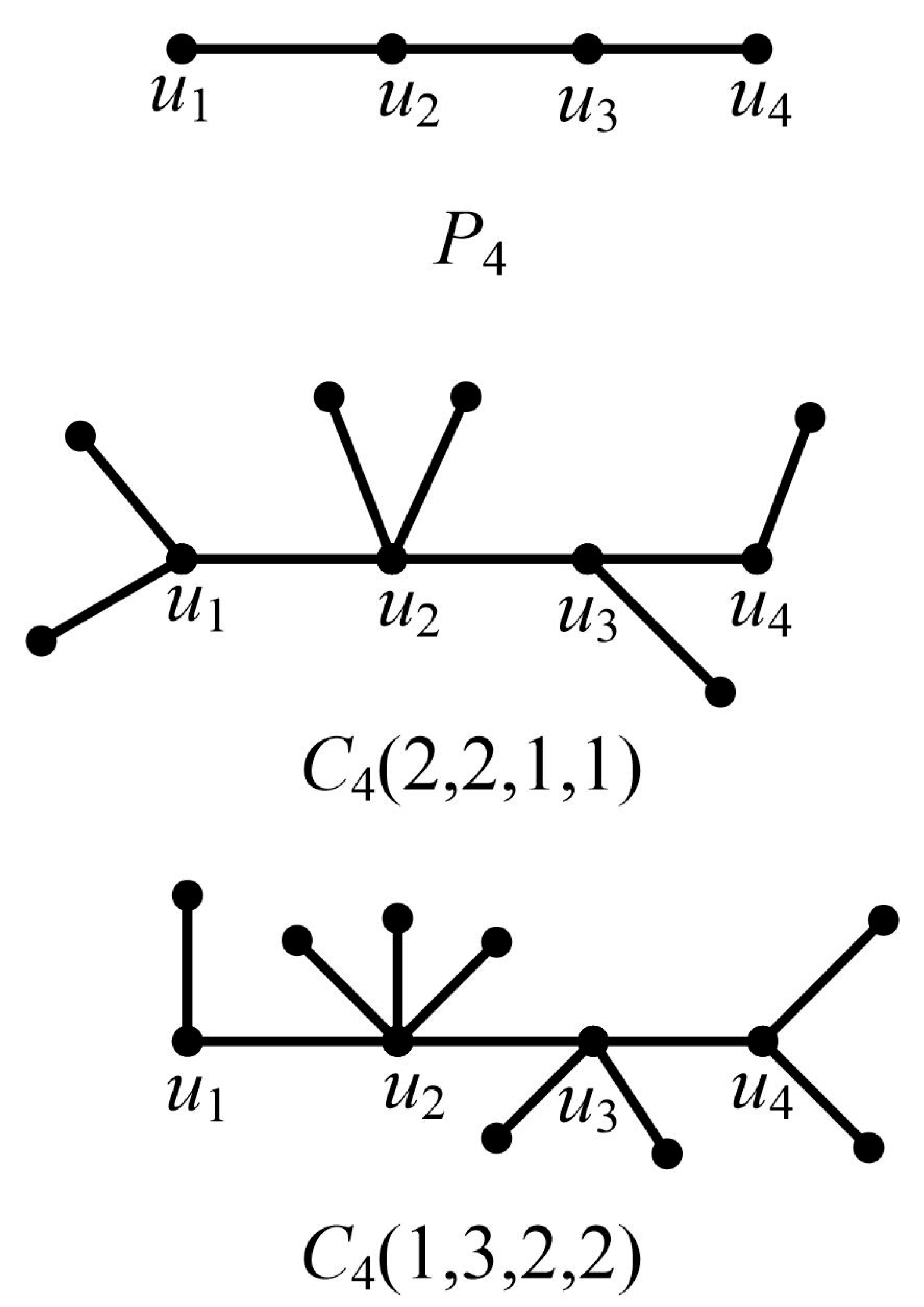


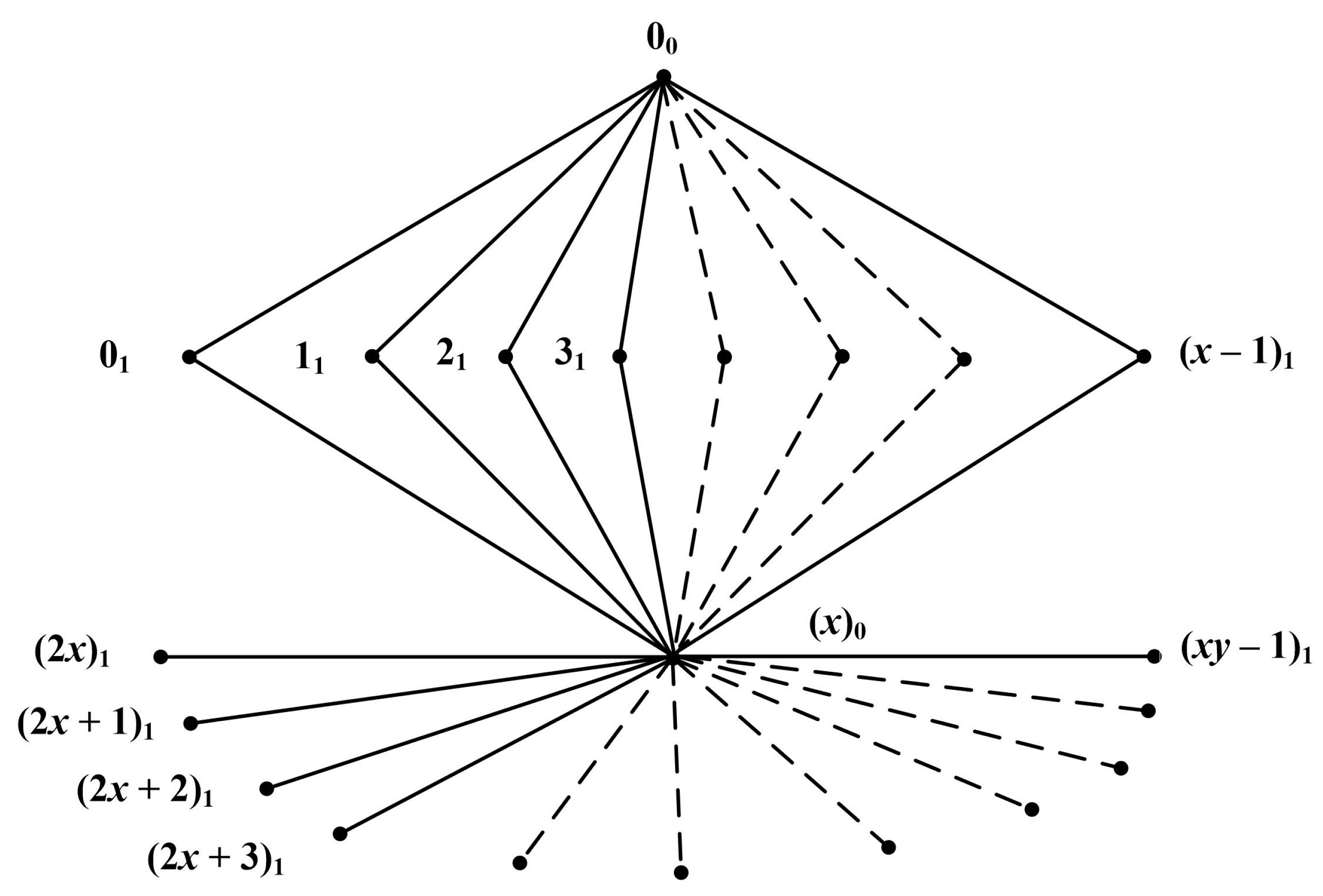



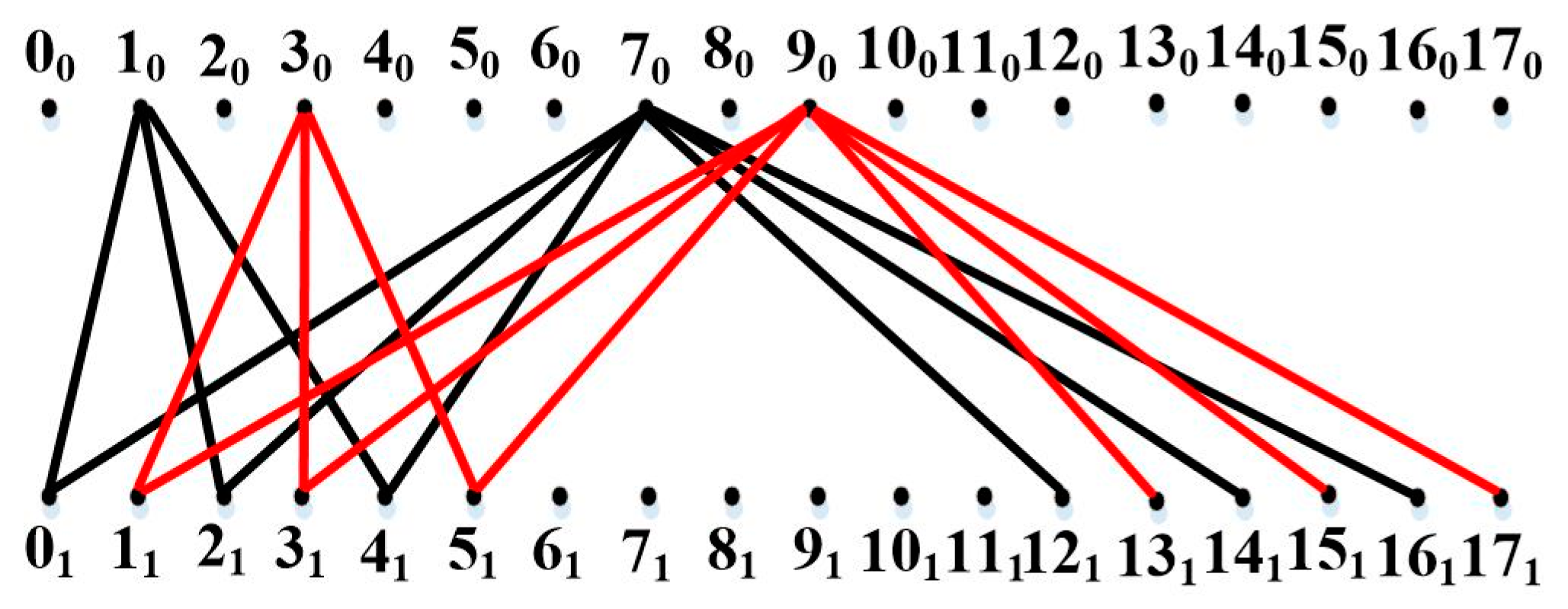
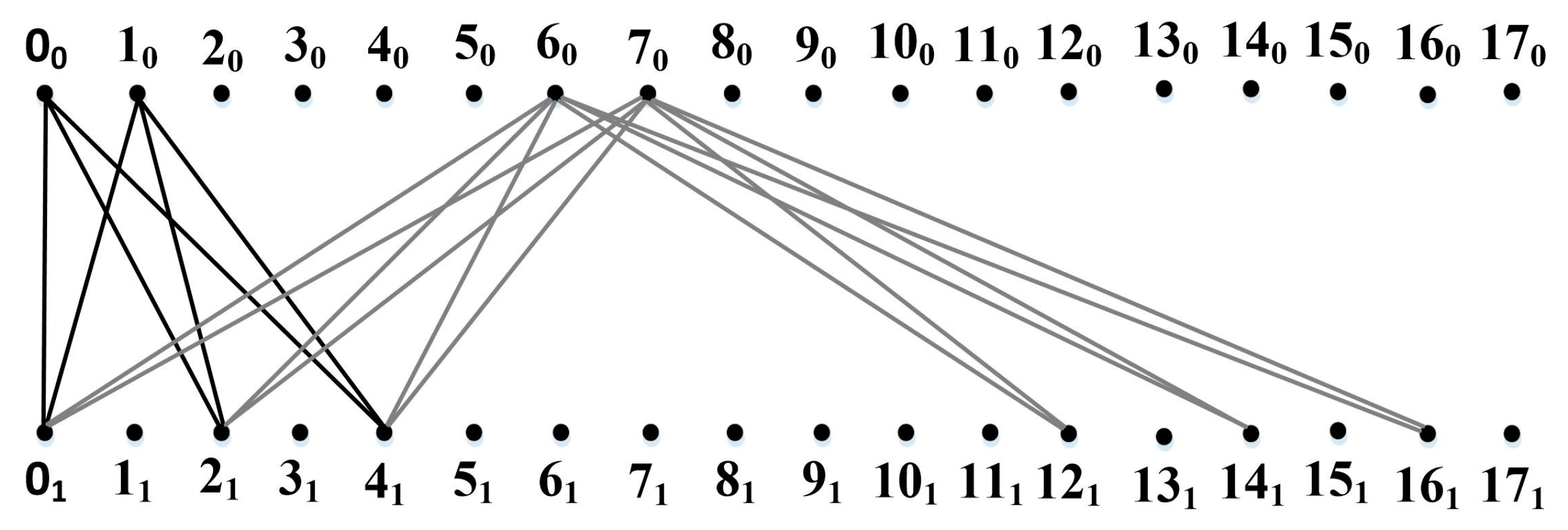

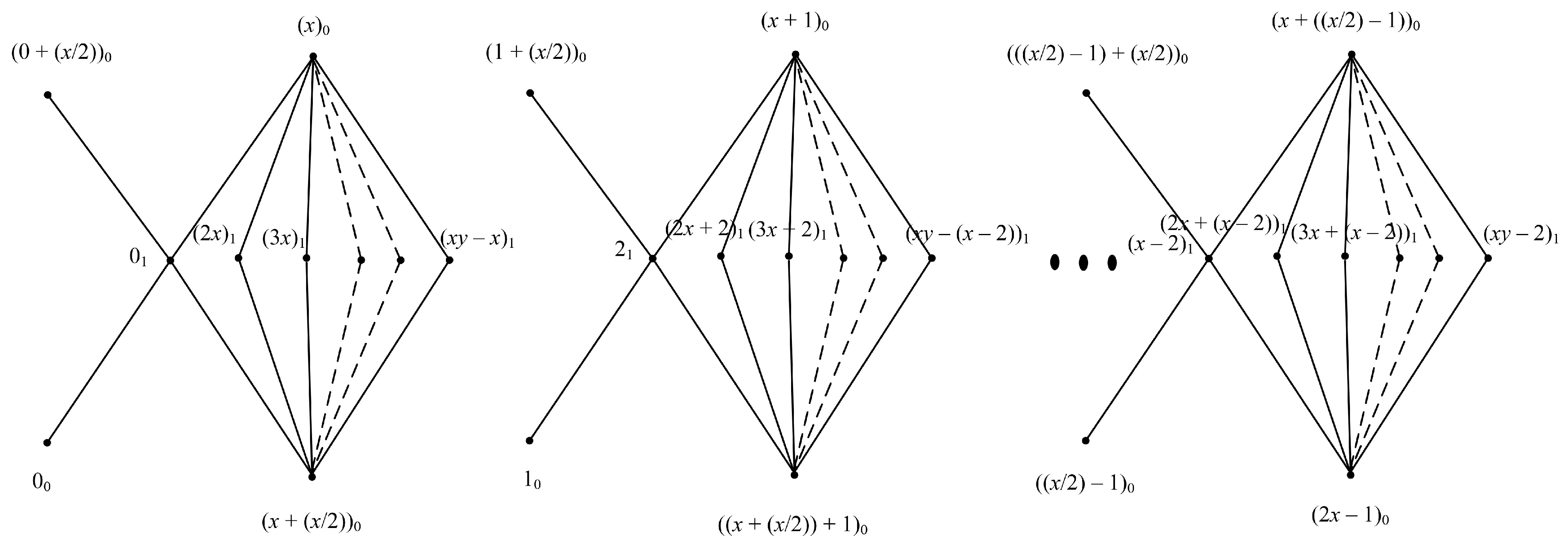





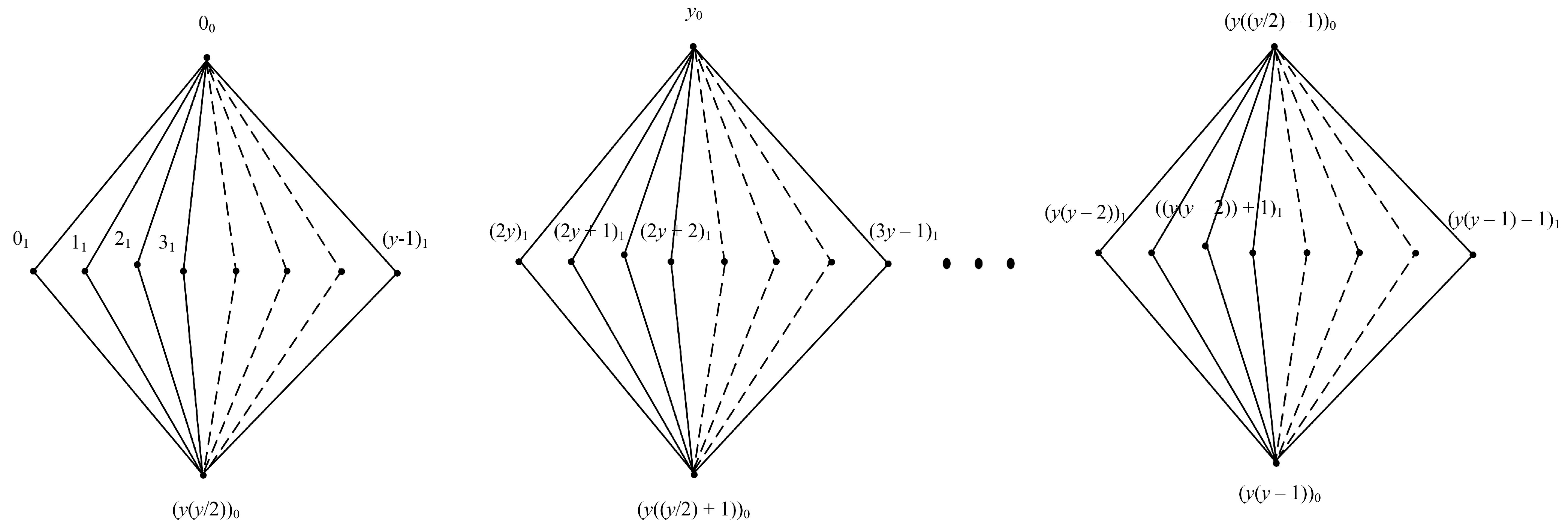
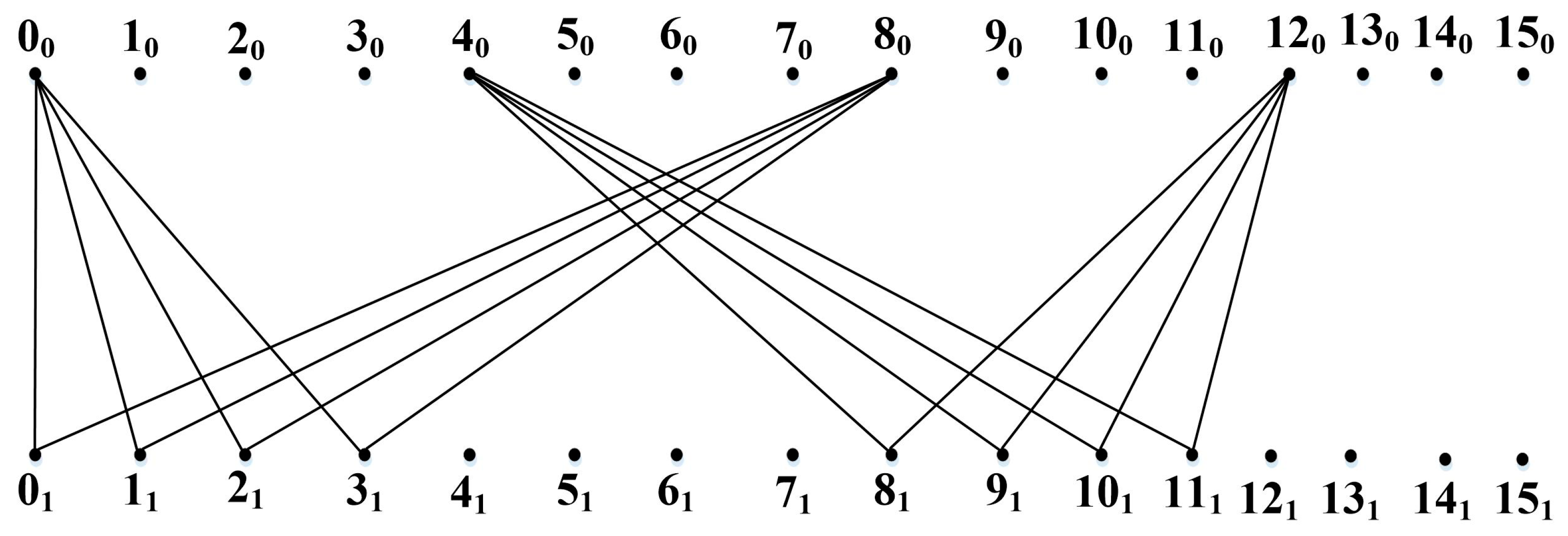
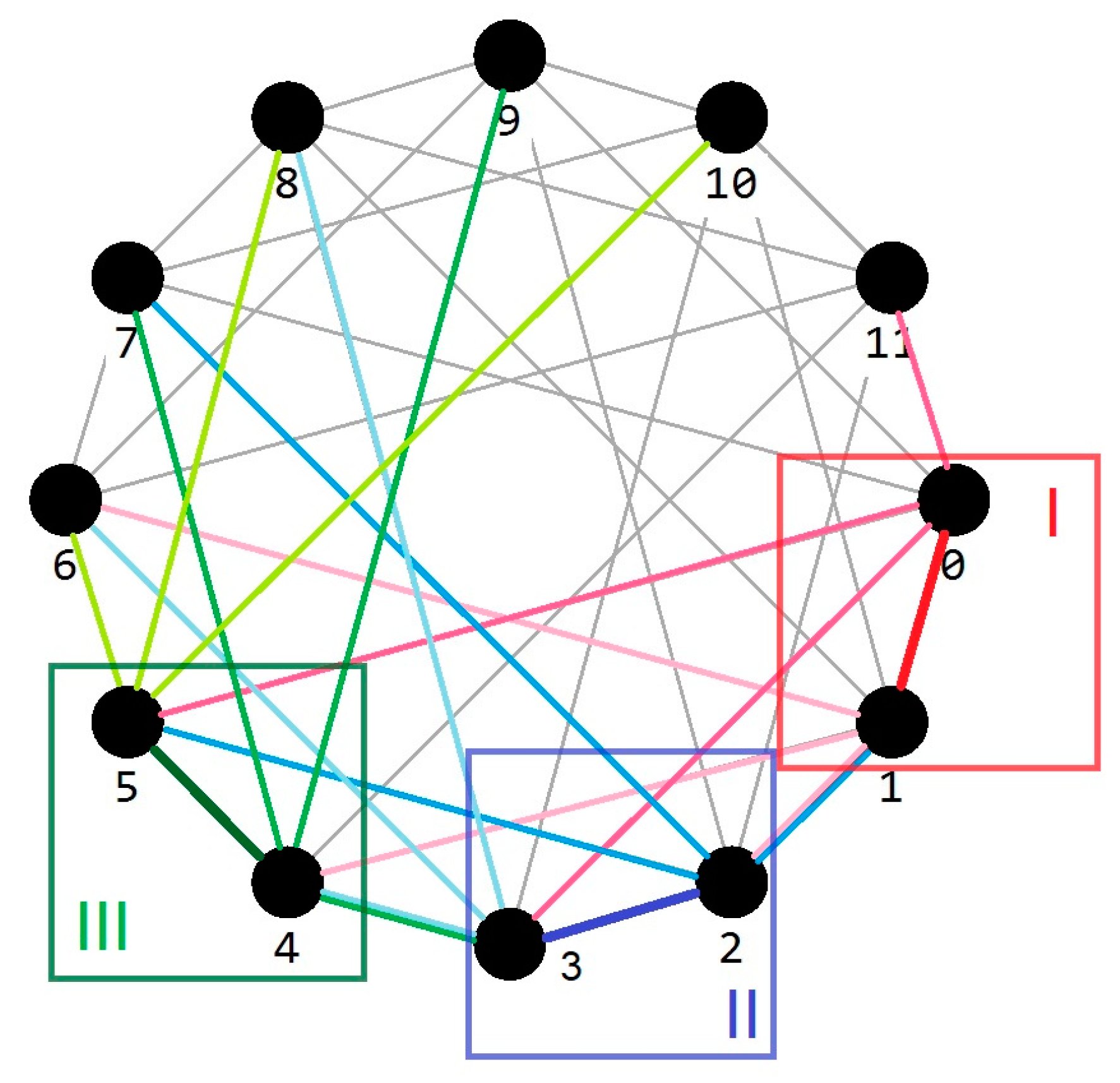
| Nomenclature | |
|---|---|
| A complete bipartite graph with independent sets of sizes and | |
| The greatest common divisor. | |
| disjoint copies of . | |
| The disjoint union of and | |
| A star with edges on vertices. | |
| A path with vertices. | |
| An isolated vertex. | |
| Three-dimensional circulant graph. –number of nodes; –generators. | |
Disclaimer/Publisher’s Note: The statements, opinions and data contained in all publications are solely those of the individual author(s) and contributor(s) and not of MDPI and/or the editor(s). MDPI and/or the editor(s) disclaim responsibility for any injury to people or property resulting from any ideas, methods, instructions or products referred to in the content. |
© 2023 by the authors. Licensee MDPI, Basel, Switzerland. This article is an open access article distributed under the terms and conditions of the Creative Commons Attribution (CC BY) license (https://creativecommons.org/licenses/by/4.0/).
Share and Cite
El-Mesady, A.; Farahat, T.; El-Shanawany, R.; Romanov, A.Y. On Orthogonal Double Covers and Decompositions of Complete Bipartite Graphs by Caterpillar Graphs. Algorithms 2023, 16, 320. https://doi.org/10.3390/a16070320
El-Mesady A, Farahat T, El-Shanawany R, Romanov AY. On Orthogonal Double Covers and Decompositions of Complete Bipartite Graphs by Caterpillar Graphs. Algorithms. 2023; 16(7):320. https://doi.org/10.3390/a16070320
Chicago/Turabian StyleEl-Mesady, Ahmed, Tasneem Farahat, Ramadan El-Shanawany, and Aleksandr Y. Romanov. 2023. "On Orthogonal Double Covers and Decompositions of Complete Bipartite Graphs by Caterpillar Graphs" Algorithms 16, no. 7: 320. https://doi.org/10.3390/a16070320
APA StyleEl-Mesady, A., Farahat, T., El-Shanawany, R., & Romanov, A. Y. (2023). On Orthogonal Double Covers and Decompositions of Complete Bipartite Graphs by Caterpillar Graphs. Algorithms, 16(7), 320. https://doi.org/10.3390/a16070320







